Potrebujeme váš súhlas na využitie jednotlivých dát, aby sa vám okrem iného mohli ukazovať informácie týkajúce sa vašich záujmov. Súhlas udelíte kliknutím na tlačidlo „OK“.
ASTM D6097-01a(2008)e1
Standard Test Method for Relative Resistance to Vented Water-Tree Growth in Solid Dielectric Insulating Materials (Includes all amendments And changes 12/5/2016).
Automaticky preložený názov:
Štandardná skúšobná metóda pre pomerný odpor voči ventiloval Water-Tree rastu v pevnej Dielektrické izolačné materiály
NORMA vydaná dňa 1.5.2008
Informácie o norme:
Označenie normy: ASTM D6097-01a(2008)e1
Poznámka: NEPLATNÁ
Dátum vydania normy: 1.5.2008
Kód tovaru: NS-33758
Počet strán: 8
Približná hmotnosť: 24 g (0.05 libier)
Krajina: Americká technická norma
Kategória: Technické normy ASTM
Kategórie - podobné normy:
Anotácia textu normy ASTM D6097-01a(2008)e1 :
Keywords:
electrical breakdown, solid dielectrics, treeing, water-treeing, Dielectric applications, Electrical breakdown, Extruded polymeric insulation, Solid dielectrics, Solid non-black thermoplastic/crosslinked electrical insulation, Treeing, Vented water-tree growth, Water-treeing, ICS Number Code 29.035.20 (Plastic and rubber insulating materials)
Doplňujúce informácie
| Significance and Use | ||||||||||
|
This is a laboratory test designed to simulate the growth of vented water-trees in the solid dielectric insulating material initiated by a sharp protrusion at the insulating and conductive interface under a wet environment in a high electrical field. Water-treeing is the phenomenon which describes the appearance of tree-like growth in organic dielectrics under an ac field when exposed to moist environments. Two types of water-trees are formed. Bow tie trees (within the dielectric) and vented water-trees formed from conductive/insulating material interface into the insulating material. The water-trees referred to in this test method are the vented type. The insulating material is the solid dielectric organic material. The conductive material is the salt solution. This salt solution is used on both sides of the insulating material to simulate the same inner and outer semiconductive shields saturated with moisture between the insulation layer used in a medium-voltage underground power cable. This test method provides comparative data. The degree of correlation with the performance in service has not been established. The standard test conditions are designed to grow a sufficient water-tree length for most solid dielectric insulating materials of interest before electrical breakdown occurs. Materials with a very high resistance to water-tree growth may require a longer time under test conditions (such as 180 days) or higher voltage (such as 10 or 15 kV) in order to differentiate their performance. For materials with a very low resistance to water-tree growth, electrical breakdown may occur during the 30-day testing time. A shorter testing time (such as one or ten days) is recommended to prevent electrical breakdown during testing for those low water-tree resistant materials. Other voltages, frequencies, temperatures, aqueous solutions, and defects can be used to evaluate specific materials for specific applications. Temperatures should not exceed the softening or melting point of the material or 10 to 15°C below the boiling point of the salt solution. Any nonstandard conditions should be reported along with the results. Tree-growth rates generally increase with the test frequency. An acceleration factor due to frequency is given by (f/60)k where f is the test frequency and k is between 0.6 and 0.7. The test frequency of 1 kHz is selected to accelerate the water-tree growth. However, the chemical nature of oxidized products from water-treeing may be different at different frequency ranges. Two assumptions for this test method are: (1) all tested materials grow trees in the same power law kinetic manner and (2) the time under test conditions of 30 days is long enough to establish the difference in water-tree growth. If there is a doubt, at least three different testing times (such as 30, 90, and 180 days) should be used to verify their comparative performance and disclose their kinetic nature of water-tree growth. Of course, it is also assumed that all water-treed regions are oxidized regions that can be stained for optical observation. Different materials may also have different temperatures and times to stain the oxidized (treed) regions due to their different softening temperature. |
||||||||||
| 1. Scope | ||||||||||
|
1.1 This test method covers the relative resistance to vented water-tree growth in solid translucent thermoplastic or cross-linked electrical insulating materials. This test method is especially applicable to extruded polymeric insulation materials used in medium-voltage cables. 1.2 The values stated in SI units are to be regarded as standard. No other units of measurement are included in this standard. 1.3 This standard does not purport to address all of the safety concerns, if any, associated with its use. It is the responsibility of the user of this standard to establish appropriate safety and health practices and determine the applicability of regulatory limitation prior to use. For specific hazard statements see 8.1. 1.4 There is no similar or equivalent IEC standard. |
||||||||||
| 2. Referenced Documents | ||||||||||
|
Podobné normy:
Historická
1.4.2012
Historická
1.11.2013
Historická
1.9.2013
Historická
1.3.2008
Historická
1.4.2010
Historická
1.11.2013


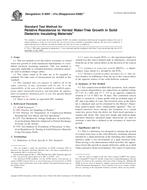
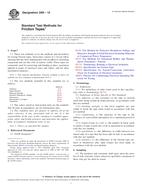 ASTM D69-12
ASTM D69-12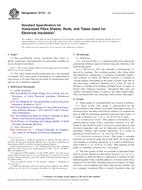 ASTM D710-13
ASTM D710-13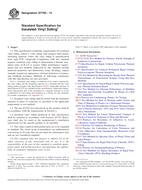 ASTM D7793-13
ASTM D7793-13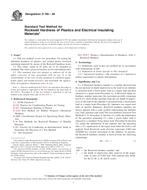 ASTM D785-08
ASTM D785-08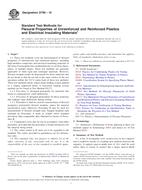 ASTM D790-10
ASTM D790-10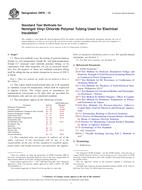 ASTM D876-13
ASTM D876-13
 Cookies
Cookies
